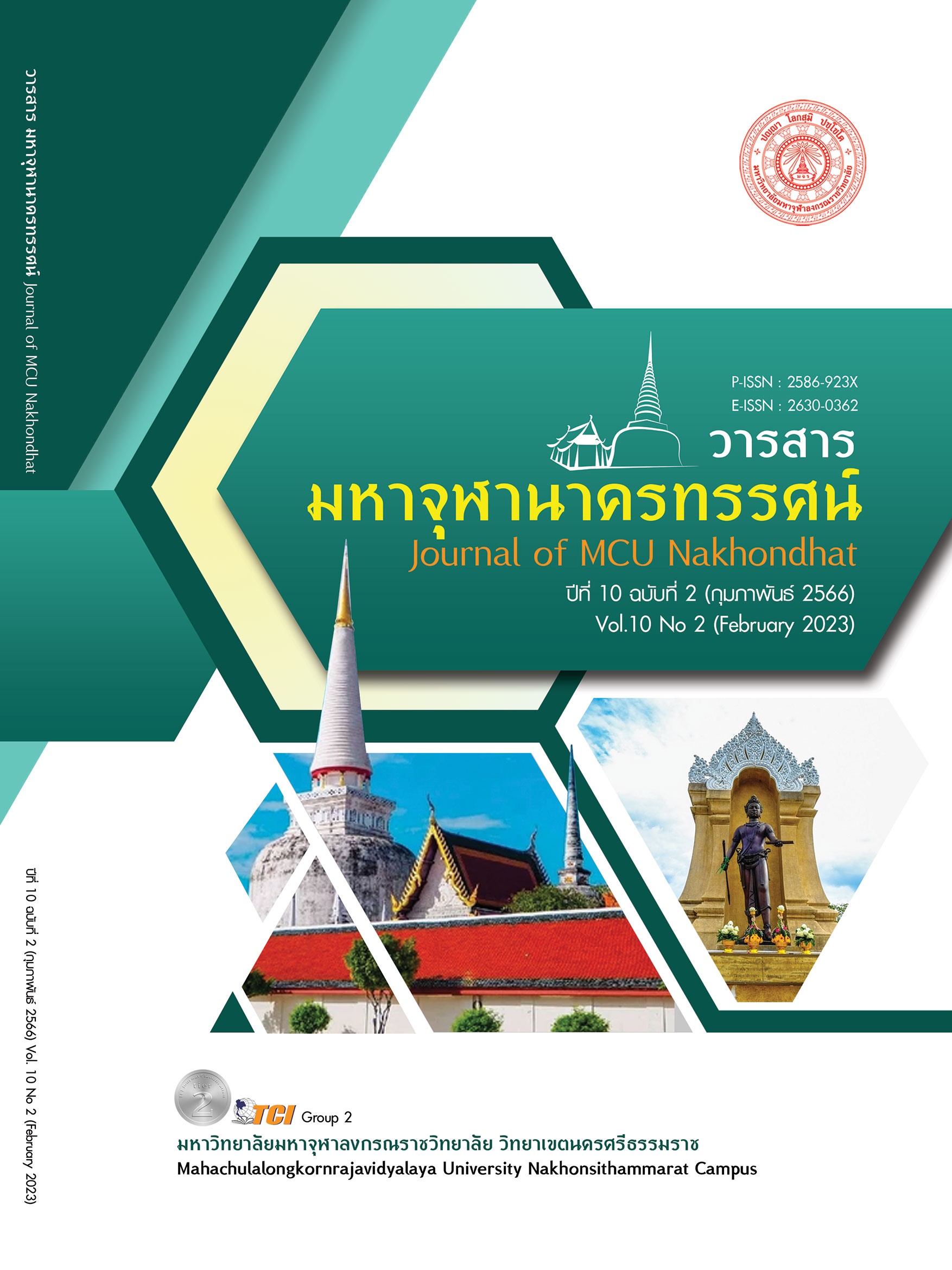THE FACTORS INFLUENCING THE WORK BEHAVIOR UPON THE GOOD GOVERNANCE OF OFFICIALS IN THE LOCAL ADMINISTRATION ORGANIZATION IN NAKHON SI THAMMARAT
Main Article Content
Abstract
The purposes of this research were: 1) to study the factors Influencing the work behavior upon the Good Governance of officials in the Local Administration Organization in Nakhon Si Thammarat, and 2) to study the relationship between the research model and the empirical data model that influencesthe work behavior upon the Good Governance of officials in the Local Administration Organization in Nakhon Si Thammarat. The samplings were collected from 400officials of the Local Administration Organization in Nakhon Si Thammarat by Stratified Sampling. The instruments used in the study were the questionnaires. The research findings revealed that: 1) The variable of awareness of justice influenced to the variable of work behavior upon the Good Governance of officials in the Local Administration Organization in Nakhon Si Thammarat was at the highest level as .67 and then they are put in order from high to low as the following: the variable of attitude, the variable of satisfaction, the variable of being a good role in work behavior, and the variable of future orientation was to be as .61, .52, .31 and .24. 2)The result of the data analysis in comparing the Personnel Administration with Good Governance of the college administrators in Nakhon Si Thammarat under the Vocational Education College reveal that the Personnel Administration with Good Governance with sex and size of college is different with statistical significance of 0.05 level and the Personnel Administration with Good Governance with age and work experience is not different with statistical significance. The hypotheses model of the researcher was perfectly fitted with the empirical data. Chi-Square statistically showed as 154.655, Probability: P = .043, Goodness of Fit Index: GFI = .972, the Adjusted Goodness of Fit Index: AGFI = .962, Comparative Fit Index : CFI = .972, the Root Mean Square Residual: RMR = .048,Degree of Freedom = 128. The finding of the study indicated that the value of Chi-Square relationship was statistically at the middle level = 1.208.
Article Details

This work is licensed under a Creative Commons Attribution-NonCommercial-NoDerivatives 4.0 International License.
References
โกศล มีคุณ และณรงค์ เทียมเมฆ. (2545). ผลของการฝึกใช้เหตุผลเชิงจริยธรรมที่มีต่อจิตลักษณะและพฤติกรรมจริยธรรมของครู. ใน รายงานการวิจัย. มหาวิทยาลัยสุโขทัยธรรมาธิราช.
ชูยศ ศรีวรขันธ์. (2553). ปัจจัยแรงจูงใจต่อผลการปฏิบัติงาน:กรณีศึกษา ขององค์การบริหารส่วนตำบล เขตอำเภอเมือง จังหวัดนครราชสีมา. ใน วิทยานิพนธ์วิศวกรรมศาสตรมหาบัณฑิต สาขาวิชาวิศวกรรมโยธา . มหาวิทยาลัยเทคโนโลยีสุรนารี.
ไชยวัฒน์ ค้ำชู. (2545). ธรรมาภิบาล: การบริหารการปกครองที่โปร่งใสด้วยจริยธรรม =Promoting good governance : principles, practices and perspectives/Sam Agere (แปล). กรุงเทพมหานคร: น้ำฝน.
ดวงเดือน พันธุมนาวิน และคณะ. (2540). ความเชื่อและการปฏิบัติทางพุทธศาสนาของคนไทย: การปลูกฝังอบรมและคุณภาพชีวิต. กรุงเทพมหานคร: คณะพัฒนาสังคม สถาบันบัณฑิตพัฒนบริหารศาสตร์. .
นีออน พิณประดิษฐ์. (2543). ปัจจัยทางจิตสังคมกับพฤติกรรมการติดสารเสพติดของนักเรียนมัธยมศึกษา และนักเรียนวิทยาลัยอาชีวศึกษาในภาคตะวันออกเฉียงเหนือ. ใน รายงานการวิจัย. สำนักงานคณะกรรมการป้องกันและปราบปรามยาเสพติด.
นีออน พิณประดิษฐ์ และคณะ. (2545). ตัวบ่งชี้ทางจิตสังคมกับพฤติกรรมการทำงานของข้าราชการสังกัดตำรวจภูธรภาค 4. ใน รายงานการวิจัย. คณะศึกษาศาสตร์ มหาวิทยาลัยขอนแก่น.
วิเชียร ธรรมาธร. (2547). ปัจจัยทางจิตสังคมที่เกี่ยวข้องกับพฤติกรรมการทำงานอย่างมีจริยธรรมด้านอุทิศตนของข้าราชการกรมกำลังพลทหารอากาศ. วารสารจิตพฤติกรรมศาสตร์: ระบบพฤติกรรมไทย, 1(2) 97-114.
สำนักงานคณะกรรมการพัฒนาการเศรษฐกิจและสังคมแห่งชาติ. (2545). แผนพัฒนาเศรษฐกิจและ สังคมแห่งชาติ ฉบับที่ 9 (พ.ศ. 2545-2549). กรุงเทพมหานคร: สำนักนายกรัฐมนตรี.
Greenberg, J. (1990). Organizational Justice : Yesterday, Today and Tomorrow. Journal of Management, 16(2), 399-432.
Moorman, R. H. (1991). Relationship between Organizational Justice and Organizational Citizenship Behaviors : Do Fairness Perceptions Influence Employee Citizenship? Journal of Applied Psychology, 76(6), 845-855.


